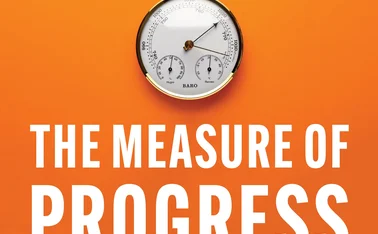
Podcast: Greg Kaplan on heterogeneous-agent models
Monetary and fiscal policy are much more closely connected than many central banks would like

Viewing the economy through the lens of a heterogeneous agent model highlights the close connection between fiscal and monetary policy, Greg Kaplan says in the latest episode of CB on Air’s Rewiring Macro series.
The University of Chicago professor’s work – which with co-authors Ben Moll and Gianluca Violante won this year’s Central Banking economics award – highlights how differences in household portfolios matter for the transmission of monetary policy.
By allowing households to hold two assets, one liquid with low returns and another illiquid with higher returns, Kaplan, Moll and Violante show how differences in household wealth can lead to very different responses to changes in monetary policy.
“It turns out to be really important,” says Kaplan. Economists have for a long time recognised that very poor households might act differently to rich ones, but the research shows “wealthy hand-to-mouth” households behave in a similar fashion. Such people have their wealth tied up in illiquid assets such as houses and pensions, so they may still live “paycheck to paycheck”.
Combined, the poor and wealthy hand-to-mouth groups make up between a third and a half of households in many advanced economies, Kaplan estimates, so they matter greatly for aggregate outcomes.
The result highlights the importance of “indirect” channels for monetary policy. Hand-to-mouth consumers have no spare cash to save, so they are little influenced by changes in interest rates. But they rely heavily on their labour income, so monetary policy’s effects are much stronger through their indirect impact on the labour market.
The implications are wide-ranging – firstly, monetary policy has distributional consequences, and secondly, because fiscal policy works through similar channels, there is a close connection between the two.
Both results are uncomfortable for central bankers, who prefer to operate at arm’s length from fiscal matters. But in the heterogeneous-agent New Keynesian model, or Hank, the efficacy of monetary policy is “much more dependent on what the fiscal authorities are doing at the same time”, Kaplan says.
Though such heterogeneity has typically been absent from central bank models, Kaplan says central bankers are quickly taking the lessons on board. Speeches by senior officials are increasingly referencing matters such as inequality, and central bank research departments have sought to learn more about Kaplan, Moll and Violante’s work.
Recognising this demand, Kaplan and Moll have designed a course on heterogeneous modelling techniques for central bankers and other economists. It will be held for the first time in August this year at the University of Chicago’s Becker Friedman Institute.
Index
05:00 The Hank model
09:40 Hand-to-mouth households
13:35 Implications for monetary policy
19:25 The tighter connection between fiscal and monetary policy
28:30 Central banks embracing change
32:40 The Chicago masterclass in heterogeneous modelling
To hear the full interview, listen in the player above, or download. CB On Air is also available via iTunes or podcast apps and from Google Podcasts (Android only).
Only users who have a paid subscription or are part of a corporate subscription are able to print or copy content.
To access these options, along with all other subscription benefits, please contact info@centralbanking.com or view our subscription options here: subscriptions.centralbanking.com/subscribe
You are currently unable to print this content. Please contact info@centralbanking.com to find out more.
You are currently unable to copy this content. Please contact info@centralbanking.com to find out more.
Copyright Infopro Digital Limited. All rights reserved.
As outlined in our terms and conditions, https://www.infopro-digital.com/terms-and-conditions/subscriptions/ (point 2.4), printing is limited to a single copy.
If you would like to purchase additional rights please email info@centralbanking.com test test test
Copyright Infopro Digital Limited. All rights reserved.
You may share this content using our article tools. As outlined in our terms and conditions, https://www.infopro-digital.com/terms-and-conditions/subscriptions/ (clause 2.4), an Authorised User may only make one copy of the materials for their own personal use. You must also comply with the restrictions in clause 2.5.
If you would like to purchase additional rights please email info@centralbanking.com test test test








